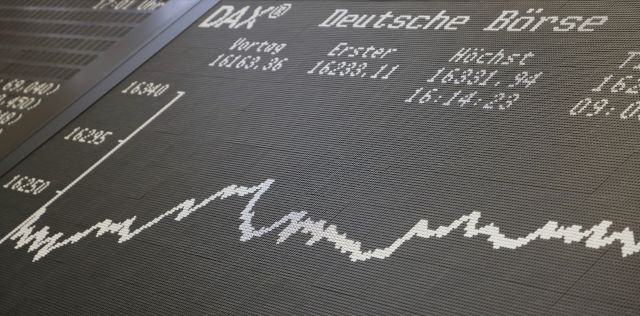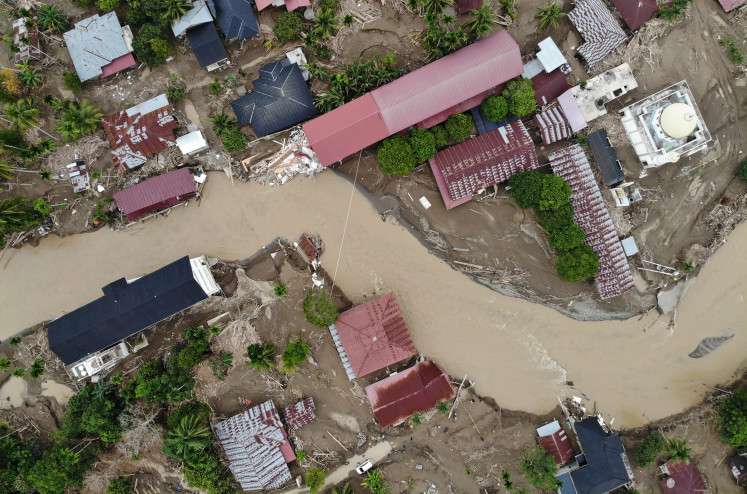Popular Reads
Top Results
Can't find what you're looking for?
View all search resultsPopular Reads
Top Results
Can't find what you're looking for?
View all search resultsReality check needed for the global economy
Although banks are stronger than before, pockets of vulnerability remain, especially where rules to make banks stronger were not applied to smaller banks.
Change text size
Gift Premium Articles
to Anyone
T
he global economy is at a critical juncture that could weigh on prosperity for years to come. For the first time in decades, we face a combination of high inflation and financial fault lines. To stop these problems from becoming entrenched, it’s time for a reality check on what current policy settings can and cannot achieve.
Global inflation has crept down from its peaks as supply chains normalized, commodity prices fell and central banks embarked on the strongest and most synchronized monetary policy tightening in years. As we report in the latest BIS Annual Economic Report, history shows that it typically takes a year for inflation to return to its previous level after surges, even during episodes less acute than the one following the pandemic.
Against this backdrop, there is an emerging sense of hope in some quarters that the global economy will achieve a soft, or soft-ish, landing. But we must be ready to tackle the significant risks that cloud the outlook.
One risk is that high inflation could persist. New price pressures could emerge. In many countries, households’ purchasing power has fallen, as wages have not kept pace with inflation. With tight job markets, workers may seek to redress the balance. Firms have found it easier to raise prices and may pass higher costs on to consumers, creating a vicious cycle. Once this sets in, it is hard to stop.
Meanwhile, risks to financial stability loom. Debt and asset prices exceed those in past periods of interest rate hikes. So far, there are still buffers from pandemic-era savings and longer loan terms locked in during years of low borrowing costs. But these buffers are depleting. As they exhaust, growth could slow more than currently expected.
The resulting financial strains will likely come through credit losses. Weak banks risk losing their footing. Historically, banking stress often goes in tandem with higher interest rates. High debt, high asset prices and high inflation add to the risks. The current episode ticks all the boxes. Although banks are stronger than before, pockets of vulnerability remain, especially where rules to make banks stronger were not applied to smaller banks. As recent experience has shown, even small institutions can trigger systemic collapses in confidence.
Non-bank financial institutions will also be challenged. These types of investment firms have grown in leaps and bounds since the Great Financial Crisis. They are rife with hidden leverage and liquidity mismatches. Business models that worked in the era of low-for-long rates will face stern tests in a higher-for-longer one.
Shaky government coffers cloud the picture further. Financial instability, if acute enough, forces governments to step into backstop markets. And it delivers a growth hit that weakens fiscal revenues. This would heighten already high public debt levels. In turn, any doubts about the government’s ability to pay its bills add to financial instability.
How should policymakers respond to these challenges? Central banks’ task is clear: they must restore price stability. A shift to permanent high inflation would have enormous costs, especially for the most vulnerable in our societies.
To give central banks more room to fight inflation, extra measures must kick in to ensure the safety and stability of financial institutions and the financial system. Where gaps exist, new regulations may be required. Working together, central banks and governments should keep macroprudential policies tight, as this can limit the strains higher rates place on banks. And stiffer bank supervision could remedy some of the faults that came to light in recent bank failures. We urge policymakers to implement Basel III now without further delay.
Fiscal policy must consolidate. This too would help in the fight against inflation and bolster financial resiliency. And it would provide badly-needed buffers that could be deployed against future downturns.
Above all, policy needs to take a longer-term view. Monetary and fiscal policies have carried too much of the burden of sustaining economic growth. As a result, they have severely tested the limits of what we call the region of stability – the mix of monetary and fiscal policy that fosters enduring economic and financial stability and defuses the inevitable tensions between them. History shows that overstepping these boundaries can trigger high inflation, economic slumps and banking, currency or sovereign crises.
Policymakers must be realistic about what they can achieve. High inflation and financial instability did not emerge by accident. They were the result of a long journey, reflecting in no small part an overly ambitious view of monetary policy’s ability to hit a small inflation target and a more general belief that macroeconomic policy could support growth indefinitely, without stoking inflation.
Mindsets need to change. They must recognize the shortcomings of repeated emergency action, which stimulates output in downturns but fails to rebuild buffers when growth resumes. To drive long-term economic prosperity, governments need to reinvigorate long-neglected structural reforms.
Without a reality check, we risk losing the trust that society needs to have in policymaking. Only price and financial stability can assure wider economic prosperity over the longer term.
***
The writer is general manager of Bank for International Settlements.











